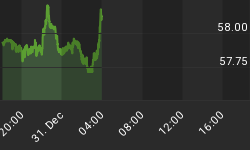Call it the summer of the turnarounds. That's how I'd describe the extraordinary number of comebacks among gold, silver, and platinum shares throughout the junior mining sector this summer. While many analysts were content to count the golds and silver out, the market simply ignored them and kept pulsing higher, even when the bull market was supposed to be over. Many junior mining shares have already established uptrends and many are overextended, yet quite a few turnaround candidates remain.
Allow me qualify the term "turnaround candidate." My criteria for determining a potential rally candidate among the junior mining shares is based on the stock in question establishing a dominant low and consolidating (i.e., moving sideways) in a fairly tight, orderly trading range for at least 3 months or more, showing all the signs of having bottomed and being under accumulation. A turnaround candidate should also have the appropriate configuration of the dominant short-term moving averages for this sector (30/60/90-day SMAs).
In light of the extraordinary performance from the silver market recently, I think it only fitting that we begin by turning our attention to the junior mining silver stocks. Along these lines, a reader recently asked me, "Can you recommend a silver penny stock in the $0.20 cent range?"
Let's start with Excellon Resources (EXN.TSXV), currently $0.13. Excellon is a Canadian junior mining company focused on mineral exploration and development of high-grade ore and base-metal opportunities throughout Mexico. EXN has been consolidating in a fairly well-defined trading range in recent months after establishing a dominant low at $0.08. EXN is also above its 30/60/90-day moving averages and those averages are starting to turn up. Because of the resistance overhead in EXN the going will likely be slow, yet there is upside potential in this low-priced share.
American Bonanza (BZA.TSXV), a Vancouver-based mine, has been consolidating between roughly $0.25-$0.30 for the past four months and is gradually starting to drift higher. BZA is above its 30/60/90-day moving averages and all three MAs are starting to turn up. Therefore, BZA qualifies as a turnaround candidate this summer.
Caledonia Mining (CAL.TSX), a Canadian mining, exploration, and development company that owns a diversified portfolio of carefully selected, high quality properties in Africa and Canada, is a turnaround candidate this summer. CAL, currently $0.29, has been quietly rounding out a bottom the past few months and is comfortably above its 30/60/90-day moving averages.

Another low-priced mining share that has turnaround potential later this summer (but does not quite measure up to my immediate health standards) is Bralorne-Pioneer Mines (BPN.TSXV), a Vancouver-based junior mine that has been around since 1897. BPN has evidently established a low above $0.20 and has been consolidating along this low for the past couple of months. BPN is still below its 90-day moving average, yet I can foresee BPN overcoming this important MA in a few weeks time. BPN qualifies as a speculative turnaround candidate at its current $0.22.
Cusac Gold Mines (CQC.TSX), a mining and exploration company geared towards the localizing, extraction, and purification of gold resources, is a thinly traded share that meets my standard for a turnaround candidate. CQC currently trades at $0.36 and has been consolidating between $0.30-$0.35 in recent months. CQC is above its 30/60/90-day moving averages and will send a breakout signal above $0.40.
Conquest Resources (CQR.TSXV), a Toronto-based junior mining and exploration company, is a low-priced turnaround candidate that has been tightly consolidating beneath the $0.15 level. CQR will send a buy signal on a breakout above $0.15.

[Disclosure: Clif Droke does not currently own shares in any of the junior mining stocks mentioned in this article, neither is he being compensated by any of the companies mentioned in this article. Speculation in the junior mining stock sector should only be attempted by experienced traders and only with a limited portion of discretionary trading capital. Stop-losses, when possible, should always be employed when making trades.]
















